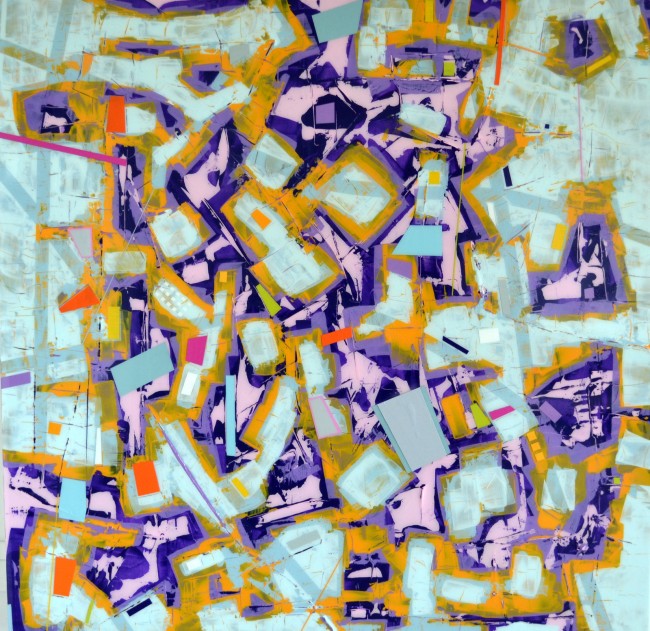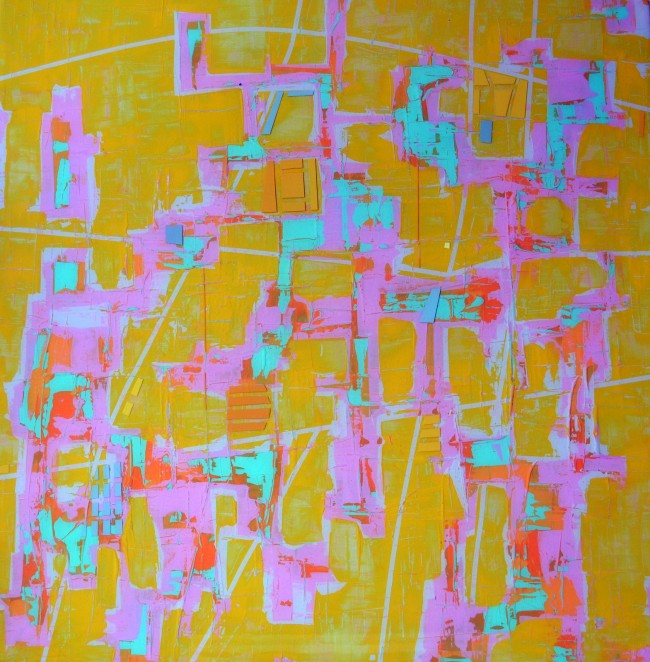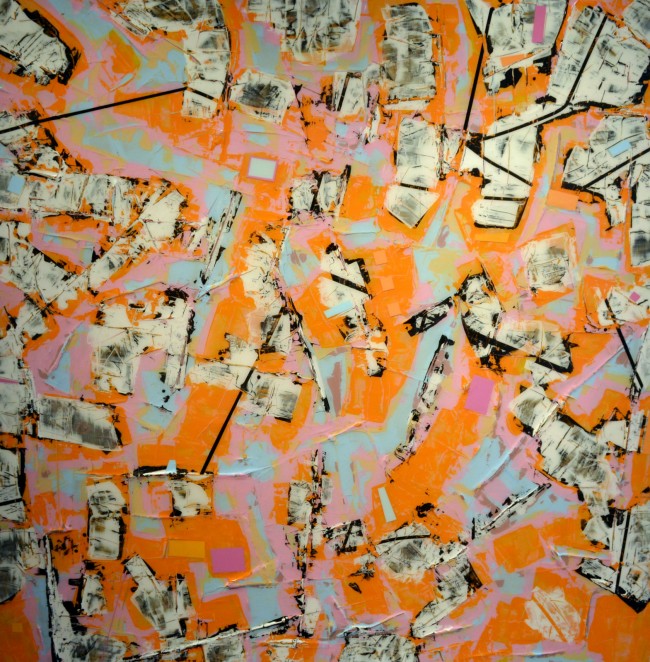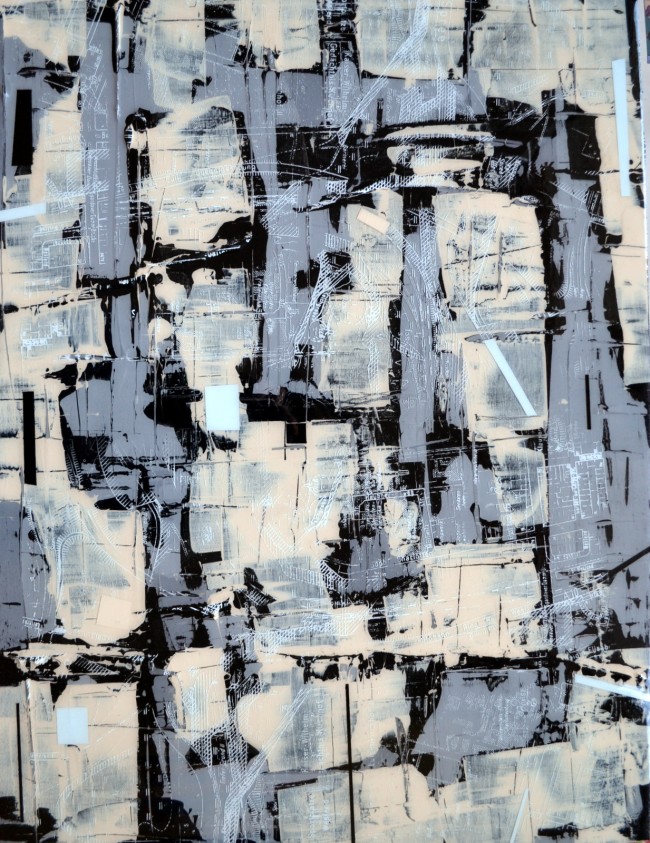My paintings are informed by cities’ identities; I am interested in urban alterations: both historical and contemporary. The geometric shapes inherent in architecture and the maps relating to architectural form profide my compositional language. My work examines the relationships between people and cities by responding to reconstruction and restoration in the urban language.
During the past two years I have spoken about the different identities that the German cities Berlin, Hamburg and Munich had over the course of the last centuries. All these cities have seen many different political governments. How different societies transform and change city spaces over the course of the centuries is significant in my work.
I am interested in urban alterations. When I study how new buildings replace older structures, I can learn a lot about the historic layers of a specific place. I have lived in all of those cities and when I started to think more conceptually about my work, I chose to talk about the places that I know well. Berlin, for example, had many different identities during the past 300 years alone. It was the capital of the Kingdom of Prussia (1701–1918), then the capital of the German Empire (1871–1918), the Weimer Republic (1919–33) and the Third Reich (1933–45). Berlin in the 1920’s was the third largest municipality in the world. During World War II, the city was largely destroyed and became divided into East Berlin, the capital of East Germany and West Berlin, a West German enclave surrounded by the Berlin Wall from 1961–89. The two city halves were reunified in 1990 and rebuilt as one city that belongs together today.
The geometric shapes inherent in architecture and the maps relating to architectural form provide my compositional language. My work examines the relationships between people and cities by responding to reconstruction and restoration in the urban landscape. My way of understanding the identity of a city is by studying history books, city maps from different eras and by looking at its architecture through photographs, maps, and especially by experiencing the city and walking the streets.
The painting process is a reflection of the changes that take place as the city evolves. Layers of resin physically separate one layer of paint from the previous one: this application creates actual and perceptual depth. The process is equivalent to the layers of archaeological strata in the evolution of a city; places overlaid with multiple histories, layers of paint cover and obscure but also are informed by the previous layer. On a personal level, my paintings embody how a place ‘felt’ to me, with a city’s atmospheres and my own memories of that place. I am translating my stories through shapes and colours, lines and edges, marks that articulate the physicality of painting. I integrate structures into my work in a way similar to that of an urban planner or architect adding elements to the urban environment.
I see myself as an observer of a city’s different identities that have been built and rebuilt over the centuries. Decay, erasure, reconstruction and building take place at the same time: I usually use painting to explore the city’s evolution and add my own experience to the context.
Image Credits
All Images Are © Ira Hoffecker
Ira Hoffecker Artist Bio
 Ira Hoffecker is a visual artist from Germany who lives and paints in Victoria, B.C. in Canada.
Ira Hoffecker is a visual artist from Germany who lives and paints in Victoria, B.C. in Canada.
She is an Active Member of the Federation of Canadian Artists.
During the past 5 years Ira had 8 solo shows, took part is several duo and about 50 group shows. She has won several awards and prizes and sold over 130 paintings. Her work is represented by galleries in British Columbia and Alberta.
Her paintings are informed by cities’ identities; she is interested in urban alterations: both historical and contemporary. The geometric shapes inherent in architecture and the maps relating to architectural form provide her compositional language. Her work examines the relationships between people and cities by responding to reconstruction and restoration in the urban landscape.
As of September she will be a student of the University of Gloucestershire in England to gain her Bachelor of Fine Arts in June 2015. She holds a Diploma of Fine Arts from the Vancouver Island School of Art and studied Aboriginal Art History at Emily Carr University, Vancouver from 2012 to 2013 and Printmaking, Sculpture, Design and Media Technologies at the University of Victoria from September 2013 to April 2014.
Her painting was on the cover of Focus magazine and Robert Amos from The Times Colonist wrote half a page about Ira’s work. Her work is featured as an “Artist to Collect” in the summer 2013 issue of Arabella Magazine, a Canadian Art, Architecture and Design Magazine.
Blog / Website: IraHoffecker.com
Follow Ira Hoffecker on: Twitter | Facebook | Linkedin








Please Share Your Thoughts - Leave A Comment!